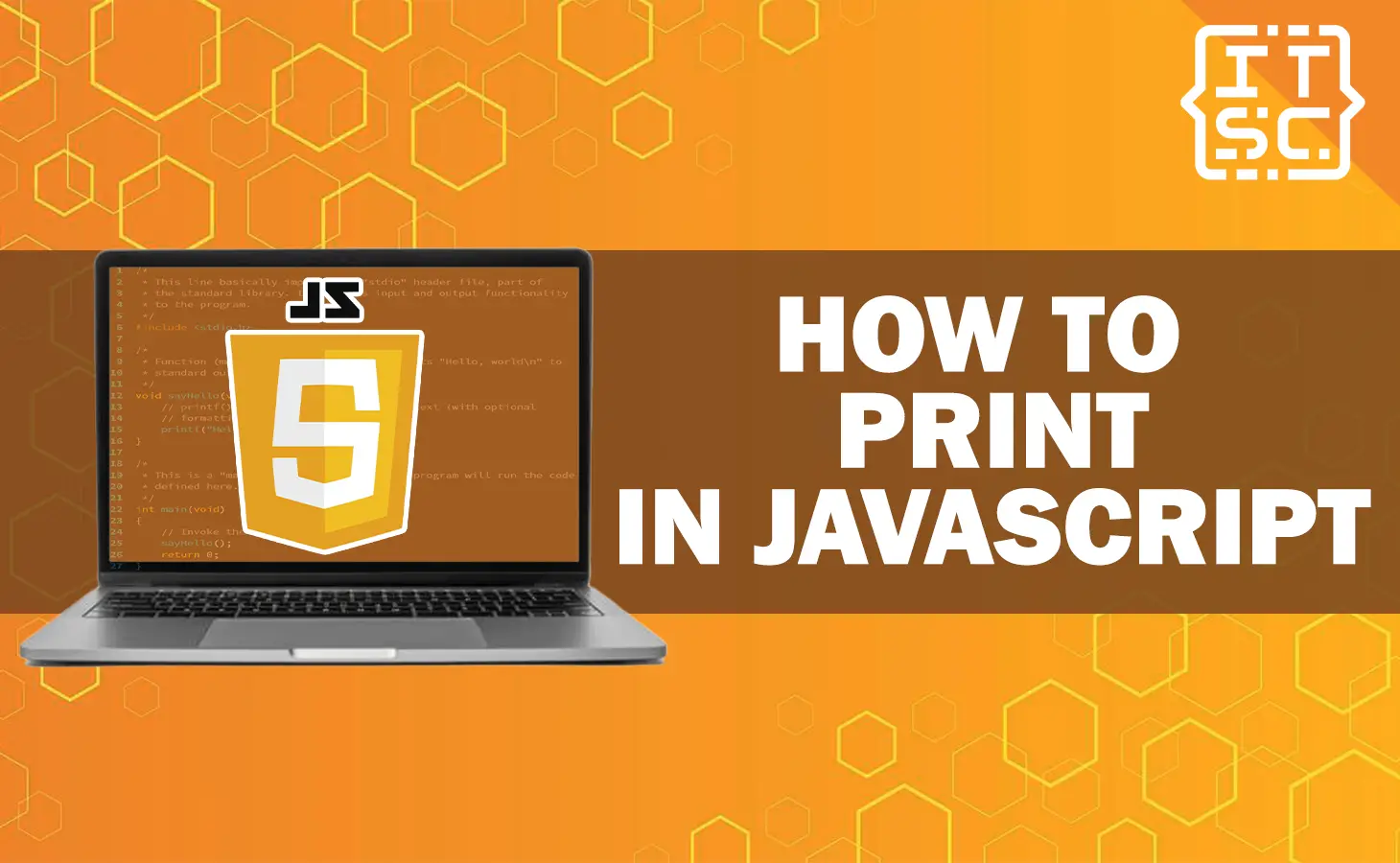One of the common functions in web development is printing content directly from a web page.
In this article, you will have to learn the different methods on how to print in JavaScript.
If you need to print a document, a specific section of a page, or generate a printable version of your web content.
Also, JavaScript provides powerful solutions to meet your printing requirements.
Methods to Print in JavaScript
Here are the following methods to print in JavaScript:
1. Printing a Full Web Page
To print the full web page using JavaScript, you can use the window.print() method.
This method triggers the browser’s print functionality, allowing the user to select a printer and configure print settings.
Here’s an example code of how to use window.print():
function printPage() {
window.print();
}
By calling the printPage() function, the browser’s print dialog will open, allowing the user to print the current web page.
2. Printing a Specific Section
Sometimes, you may only want to print the exact section of a web page rather than the whole content.
To produce this, you can create a print style sheet and apply it to the focus section.
This style sheet should determine the specific styles for printing.
Here’s an example code:
<link rel="stylesheet" type="text/css" media="print" href="print.css">
In the print.css file, you can define the styles for the section you want to print. By applying the media=”print” attribute to the tag, the browser will only use this style sheet when printing.
3. Generating a Printable Version
Another method for printing in JavaScript is to generate a printable version of your web content.
This method enables you to customize the appearance and layout of the printable version.
You can construct a separate HTML template that represents the printable content and constantly populate it with the important data.
Here’s an example code:
function generatePrintableVersionExample() {
// Retrieve data and format it accordingly
// Create a new window for the printable version
const printableWindowSample = window.open('', '_blank');
// Write the printable content to the new window
printableWindowSample.document.write(`
<html>
<head>
<title>Printable Version</title>
<!-- Additional stylesheets and meta tags for print -->
</head>
<body>
<!-- Printable content goes here -->
</body>
</html>
`);
// Close the document after printing
printableWindowSample.document.close();
// Trigger print
printableWindowSample.print();
}
By calling the generatePrintableVersionExample() function, a new window will open with the printable content, and the browser’s print dialog will pop up.
4. Customizing Print Output
When printing in JavaScript, you may need to customize the print output to match your specific needs.
Here are some simple customization options:
Paper Size and Orientation
You can define the paper size and orientation for the printed content using CSS.
By applying the @page rule in your print stylesheet, you can control different aspects of the print layout, such as size, margins, and orientation.
Here’s an example CSS program:
@page {
size: A4 landscape;
margin: 2cm;
}
Page Breaks
To control page breaks within the printed content, you can use the page-break CSS properties.
These properties enable you to determine where the page breaks should occur, and it will ensure proper pagination.
Let’s see an example:
@media print {
.page-break {
page-break-after: always;
}
}
In your HTML, you can use .page-break class to illustrate where a page break should happen.
Headers and Footers
You can add headers and footers to the printed pages using the @top-left, @top-center, @top-right, @bottom-left, @bottom-center, and @bottom-right CSS properties.
These properties enable you to include additional information, such as page numbers or document titles, in the print output.
5. Handling Print Events
JavaScript offers window.onbeforeprint and window.onafterprint events, which enables you to perform actions before and after the print dialog is demonstrated to the user.
These events are useful when you need to change the content or perform several tasks based on the print action.
For example:
window.onbeforeprint = function() {
// Perform actions before print
};
window.onafterprint = function() {
// Perform actions after print
};
By determining the functions for these events, you can add custom action to your print functionality.
FAQs
To define if the print dialog is open, you can use the window.matchMedia() method.
Yes, you can print exact elements by using the window.print() method in combination with CSS media queries.
By applying proper styles to the elements you want to print, you can obtain the selective printing.
Yes, you can focus the specific browsers or browser versions by using CSS media queries.
By applying various styles for each targeted browser, you can obtain the browser-specific print layouts.
Yes, you can print images using JavaScript by including them in the printable content or applying proper styles to show them only in the print output.
Conclusion
In conclusion, printing content from a web page using JavaScript is a powerful feature that increases the user experience and provides flexibility in generating printable versions.
In this article, we have learned the methods on how to print in JavaScript. From printing a full web page to customizing print output and handling print events, JavaScript offers a range of possibilities.

